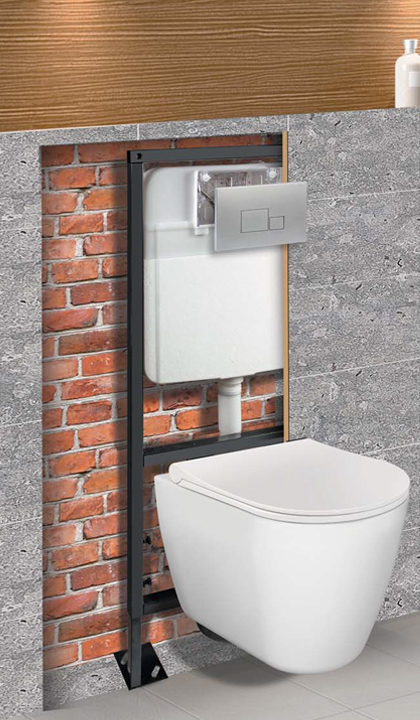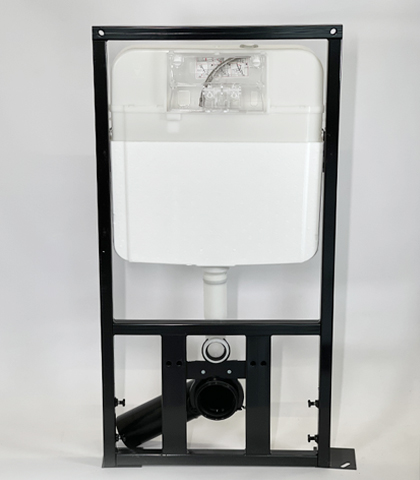Modern bathroom renovation often includes installation of an installation for a suspended toilet. In fact, this is a simple design that allows you to hide all communications and pipes from prying eyes, and leave only the toilet itself and the flush button visible. Today we will talk about what advantages toilet installations have and what these devices are.
Advantages of the toilet installation
- Stylish design
 Agree, a bathroom where pipes, joints and other communication elements are not visible looks much neater, more modern and more solid. Installations become simply necessary if you are doing an author's, designer renovation in an apartment, because it would be at least unreasonable to spoil the thoughtful style of the bathroom with an ordinary toilet bowl with a tank.
Agree, a bathroom where pipes, joints and other communication elements are not visible looks much neater, more modern and more solid. Installations become simply necessary if you are doing an author's, designer renovation in an apartment, because it would be at least unreasonable to spoil the thoughtful style of the bathroom with an ordinary toilet bowl with a tank.
- Ergonomics
Installations with a suspended toilet helps to save valuable space, which is especially important in rooms of a small area. The compact location will allow you to visually expand even a very small toilet room.
- Ease of care.
Since the hinged toilet does not rest on the floor, the process of cleaning and washing floors becomes much easier. There are no places for dust accumulation, which means it will be much easier to keep the room clean.
- Low noise level
The pipes and the tank are hidden in a special niche, which is covered with panels on top. This means that the noise level from the accumulating tank will be significantly less, in most cases — almost inaudible. Perhaps this criterion does not seem so important to you, but believe me: if the toilet is adjacent to the kitchen or living room, low noise is a huge plus.
- Wide functionality
You can mount a hinged toilet with an installation anywhere, without having a strict binding to sewer communications. You can experiment with the space in the toilet and move the toilet bowl to any convenient point.
It is worth mentioning the fact that after installing the hinged system, it is quite difficult to make changes to the already mounted structure. Therefore, it is worth considering in advance all the pros and cons of installing a hinged structure in a specific place. Otherwise, it will be troublesome and expensive to transfer the installation.
Types of installations
You can divide all installations by type into 2 groups:
- Blocky
- Framed
The first type requires installation at the capital structure - walls. This type is much cheaper, faster to install and less functional.
The second type - frame installations - can be installed anywhere, regardless of the presence of capital walls. They are used for installation in rooms with plasterboard partitions, in modular structures, etc. The frame installation is more expensive, but it guarantees stability, strength and durability.
 By configuration , there are:
By configuration , there are:
- Conventional installations with a height of 1.1 m and a width of up to 0.5 m. The depth of the niche for such installations is about 15-20 cm, which is quite enough to accommodate a drain tank of sufficient capacity.
- Understated installations for installation in hard-to-reach places, for example, under a window, with a frame height of no more than 80-82 cm.
- Corners are used in rooms with limited space when you need to "drown" the toilet in a corner.
- Linear views involve the installation of not only a toilet bowl, but several plumbing fixtures in a row. For example, it can be a sink and a bidet placed next to a suspended toilet.
- Double-sided installations are in great demand for installation in public places, for example, in the toilet of a large shopping center, office building, train station. They are appropriate wherever there is a large traffic of people and it is necessary to place several plumbing fixtures on a limited area.